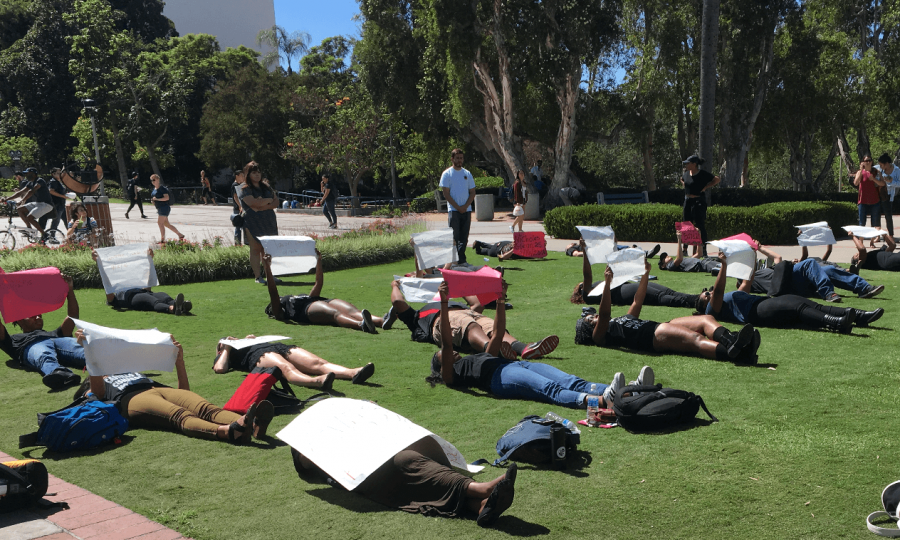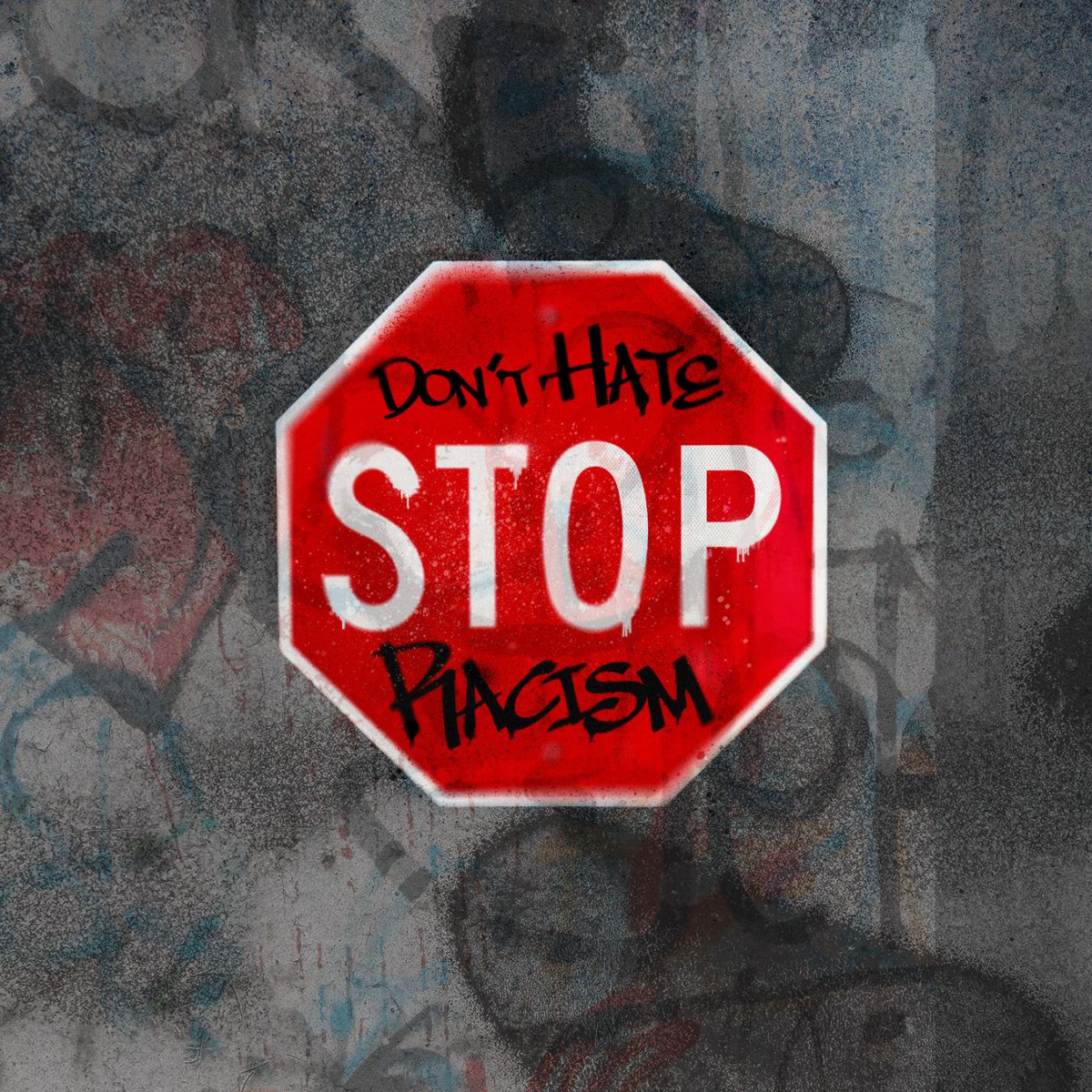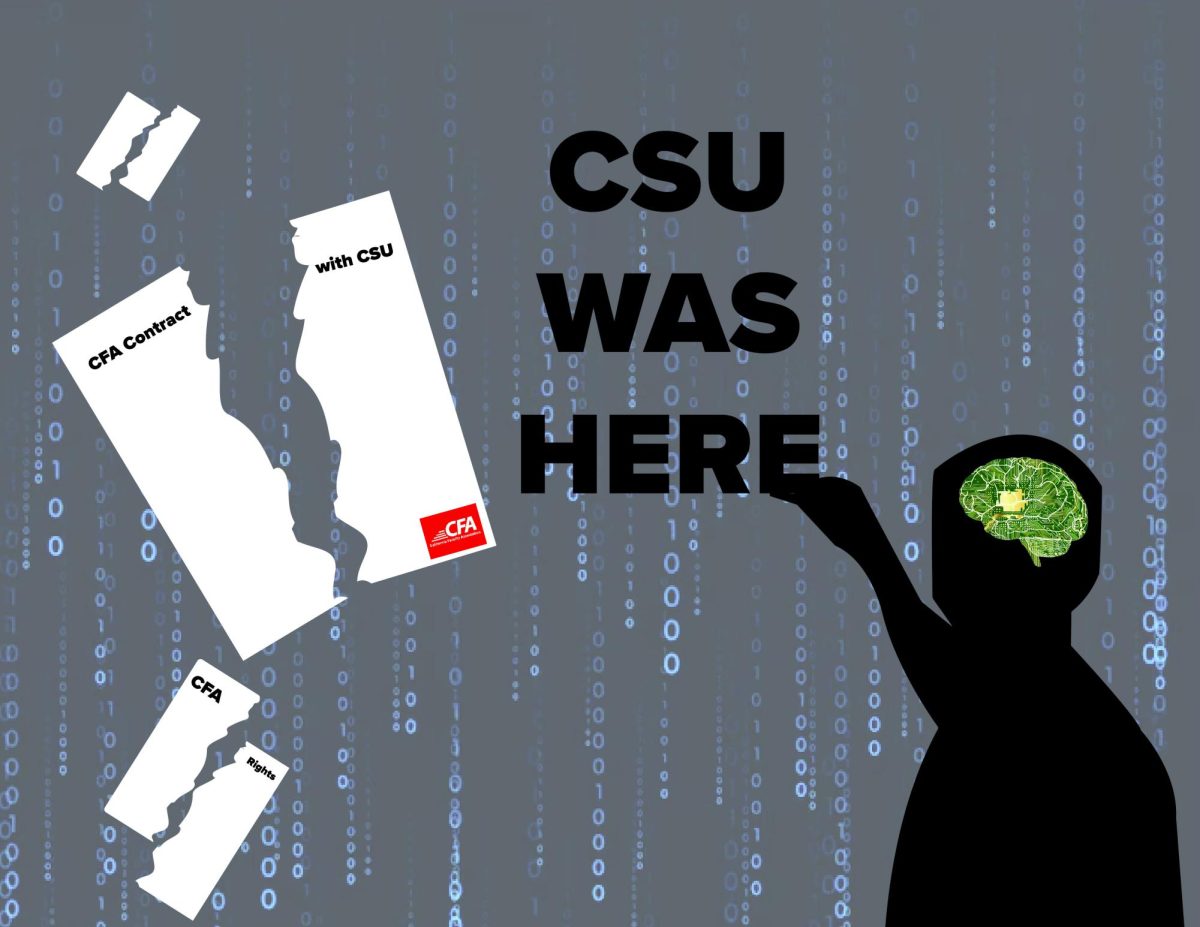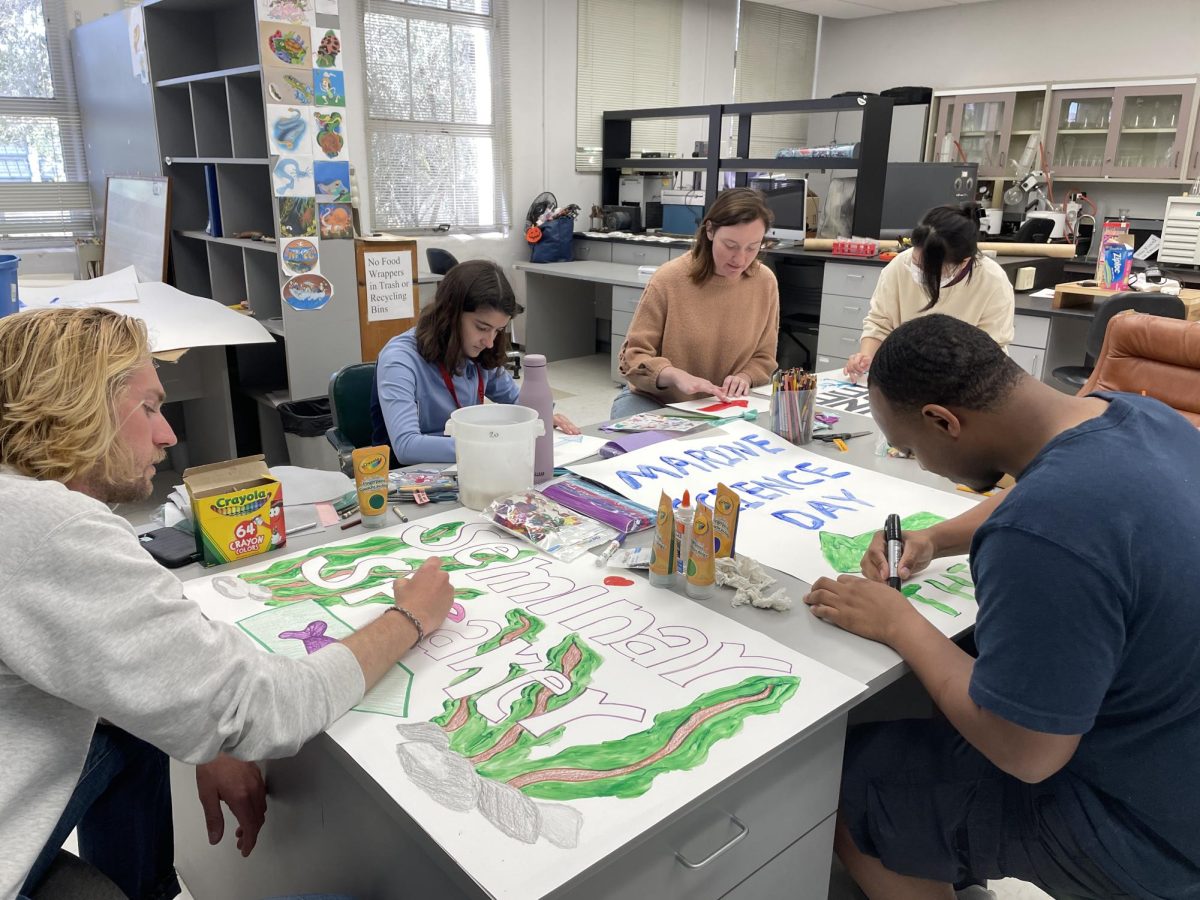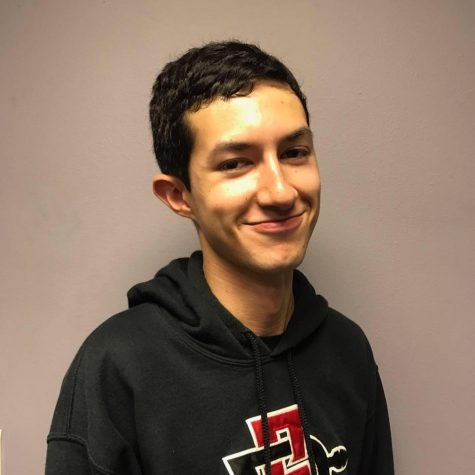Protesters rallied in front of the El Cajon police station on the morning of Wednesday, Sept. 28, the day after Alfred Olango, a black man, was shot and killed by the El Cajon Police Department, to express their dissatisfaction with what they perceive as racism on the part of police.
Protesters also marched through the streets of El Cajon the evening of Sept. 28.
Olango was shot walking into traffic after making a “shooting stance,” according a statement released by El Cajon police.
Rehabilitation counseling graduate student Tia Loper, who was present at the protest, said Olango should not have been treated by police as a threat.
“It really upsets me that there was a black man who had just finished having a seizure, disoriented and calls were made out for help, but he was handled like an assailant,” she said. “He was handled like he was a danger to himself and to the community, like he was a danger to police, and that’s not right.”
It has not been confirmed that Olango, 38, had a seizure before the shooting. He was killed after the police department received a call of a man who was not acting like himself, according to the El Cajon police department.
Responding police officers initially deployed an electronic control device but when Olango placed his hands together and extended them toward the officer one officer fired his electronic control device while the other shot him, according to El Cajon police.
Loper said Olango’s shooting resonates with her because she lives two blocks from the place where the incident occurred. She said she was in class at the time of the shooting.
“The fact that it happened in my city to a black person, two blocks down from my home, is not okay with me,” Loper said. “And that’s what brought me out here today, because I wanted to make sure that my presence is felt in this movement. Police brutality has to stop.”
“It’s becoming harder and harder to ignore it as an anomaly, and more as this is what is happening and people need to start paying attention,” senior political science major Cameron Liff said. “It’s becoming too much of a trend to ignore it as just every once in awhile.”
Liff said the police should have handled the incident differently.
“The police officer had 21 years on the force,” he said. “They were well within range to see that he was not holding a gun, it was a cell phone. There was no reason to shoot first. He fired a taser and missed. Like, you shouldn’t jump immediately to shooting.”
Olango was holding a vape pen when police opened fire on him, a press release from the police department of El Cajon said.
“The facts aren’t all out yet,” Liff said. “The video hasn’t been released yet.
It will be hopefully soon. It’s just, there’s a lot of unknowns, but it doesn’t look good.”
It has not been confirmed whether Olango had a mental disability.
Psychology junior Talia Raoufpur said citizens and police both need to be unbiased in their interactions with one another.
“As human beings, we must try to disconnect our racial and authority-related biases from our actions,” she said.“We must come together to do what is best for our communities, as opposed to our egos.”
El Cajon police have released a screenshot of a video of the incident. In the screenshot, Olango appears to be pointing an object at officers. The police department has not yet released the full video.
The American Civil Liberties Union is asking the El Cajon police department to release the full video of the incident.
This shooting comes after the arrest of another black man, Marquis Campbell, at San Diego State on Thursday, Sept. 15.
SDSU students organized another protest Thursday, Sept. 29, in front of Hepner Hall.
Over a dozen students held up signs with the names of African-Americans who have been killed by police in the past month. The students laid on the ground when the name they were holding was called, symbolizing their deaths.
Zakkiyya West, president of the Africana Studies Majors and Minors Association, said the purpose of the event was to have a visual dialogue and evoke emotions in students on campus.
“We put the rally together because there was just the incident two days ago of a man dying at the hands of police for the same thing Marquis Campbell could have died of,” she said.
Terry Sivers, education doctoral student, said he hoped the event would make people feel uncomfortable.
“For me, it’s wanting to make people feel uncomfortable, because every day, walking on this campus, walking in the streets, I’m uncomfortable,” he said. “So we want to make students on this campus as uncomfortable as possible, have them face this reality that they don’t have to confront.”
He said the incidents involving Olango and Campbell were not surprising.
“Every day in this country, since slavery, a black man, woman or child has been murdered at the hands of police, or a white vigilante,” he said.
Sivers said he is unconcerned with those adversarial or apathetic to his cause.
“My fight and struggle isn’t to win their approval or to get them to understand,” he said “My struggle is for liberation,” he said.
Lauren Spears, a rhetoric and writing studies professor, lives five blocks away from where the shooting took place in El Cajon.
“This is historic,” she said.” “I have never seen an organized movement like this in El Cajon. This might be a very pivotal movement for community organizers. El Cajon is a very poor community, and we need people to stand for it.”




